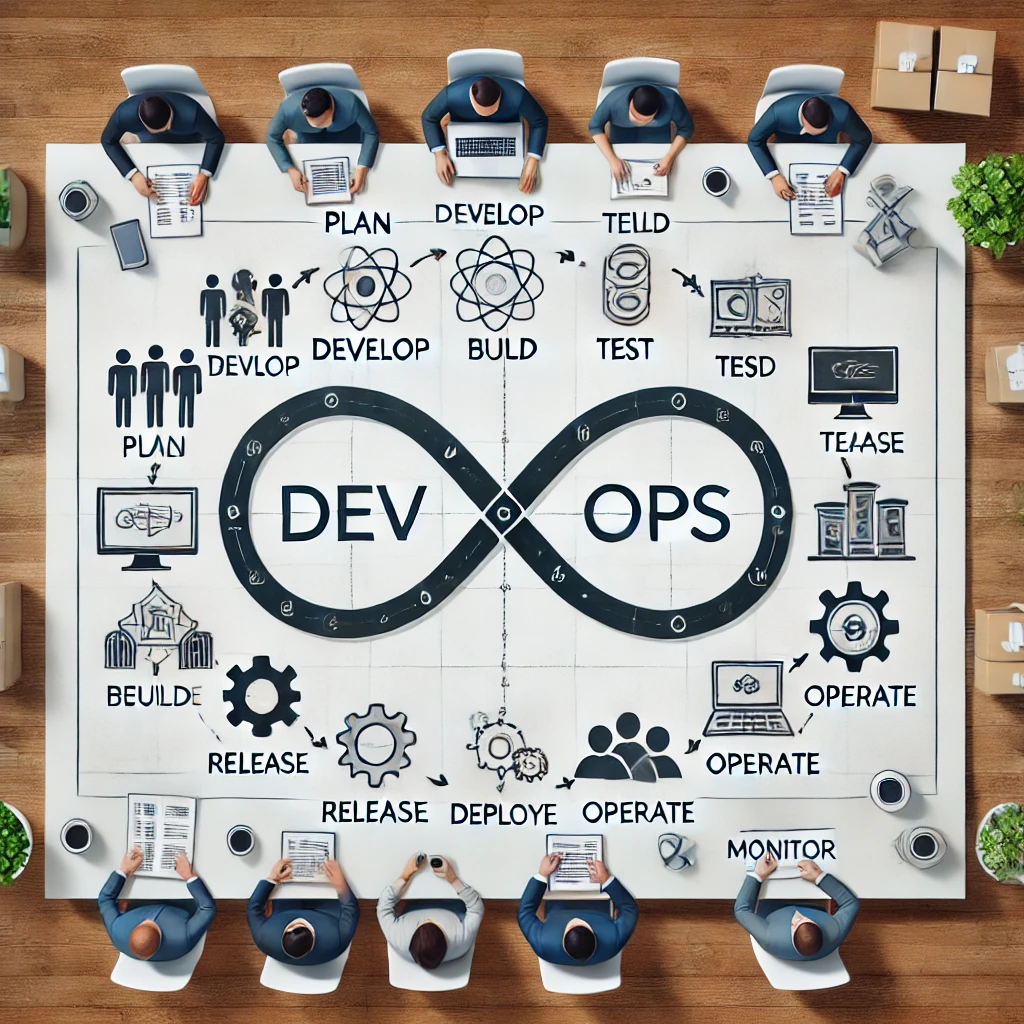What is DevOps?
Getting Started with DevOps
Understanding DevOps
DevOps is a **culture**, **set of practices**, and **tools** that improve collaboration between development (Dev) and operations (Ops) teams. It enables faster software delivery, automation, and continuous feedback. Unlike traditional software development models, where development and operations teams work in silos, DevOps encourages continuous communication and shared responsibilities.
Key aspects of DevOps:
- Collaboration: Breaks silos between developers and IT teams, fostering a culture of shared ownership.
- Automation: Reduces manual intervention and human errors, ensuring efficiency and reliability.
- Continuous Integration & Deployment: Ensures frequent releases, improving software stability and reducing time to market.
- Monitoring & Feedback: Provides real-time performance insights, enabling quick troubleshooting and optimization.

DevOps unites Dev and Ops teams for efficiency.
Why is DevOps Important?
DevOps helps businesses improve their software development lifecycle by making processes faster and more reliable. It ensures high-quality software releases and reduces the risks associated with deployments. By leveraging DevOps, organizations can:
- Reduce Deployment Failures: Automated testing and rollback capabilities ensure that errors are minimized.
- Improve Recovery Time: In case of failures, DevOps tools enable quick issue resolution.
- Increase Efficiency: Infrastructure as Code (IaC) automates repetitive tasks, allowing teams to focus on innovation.
- Enhance Security: Continuous monitoring and compliance checks ensure robust security measures.
DevOps Core Principles
DevOps follows several guiding principles:
| Principle | Description |
|---|---|
| Automation | Automates repetitive tasks like testing, deployment, and monitoring. |
| Collaboration | Encourages shared responsibilities and effective communication across teams. |
| Continuous Integration | Ensures that every code change is tested and integrated into the repository frequently. |
| Continuous Delivery | Automates software release, making deployments faster and more reliable. |
| Monitoring | Tracks system performance and identifies issues early, preventing downtime. |
DevOps Lifecycle
The DevOps lifecycle includes several continuous phases:
- Plan: Define project goals, gather requirements, and create roadmaps.
- Develop: Write and commit code using version control tools like Git.
- Build: Compile and package software using build automation tools.
- Test: Run automated tests to ensure code quality and catch bugs early.
- Release: Prepare the software for deployment with staging and approvals.
- Deploy: Automate software delivery and ensure seamless production deployments.
- Operate: Manage system health, scalability, and infrastructure.
- Monitor: Collect logs, track performance, and provide feedback for improvement.
Learning Outcomes
By the end of this module, you will:
- Understand what DevOps is and its impact on modern software development.
- Learn the core principles of DevOps and how they streamline workflows.
- Explore the benefits of DevOps adoption for businesses and developers.
- Gain insights into the DevOps lifecycle and the role of automation.
- Become familiar with key DevOps tools and best practices.